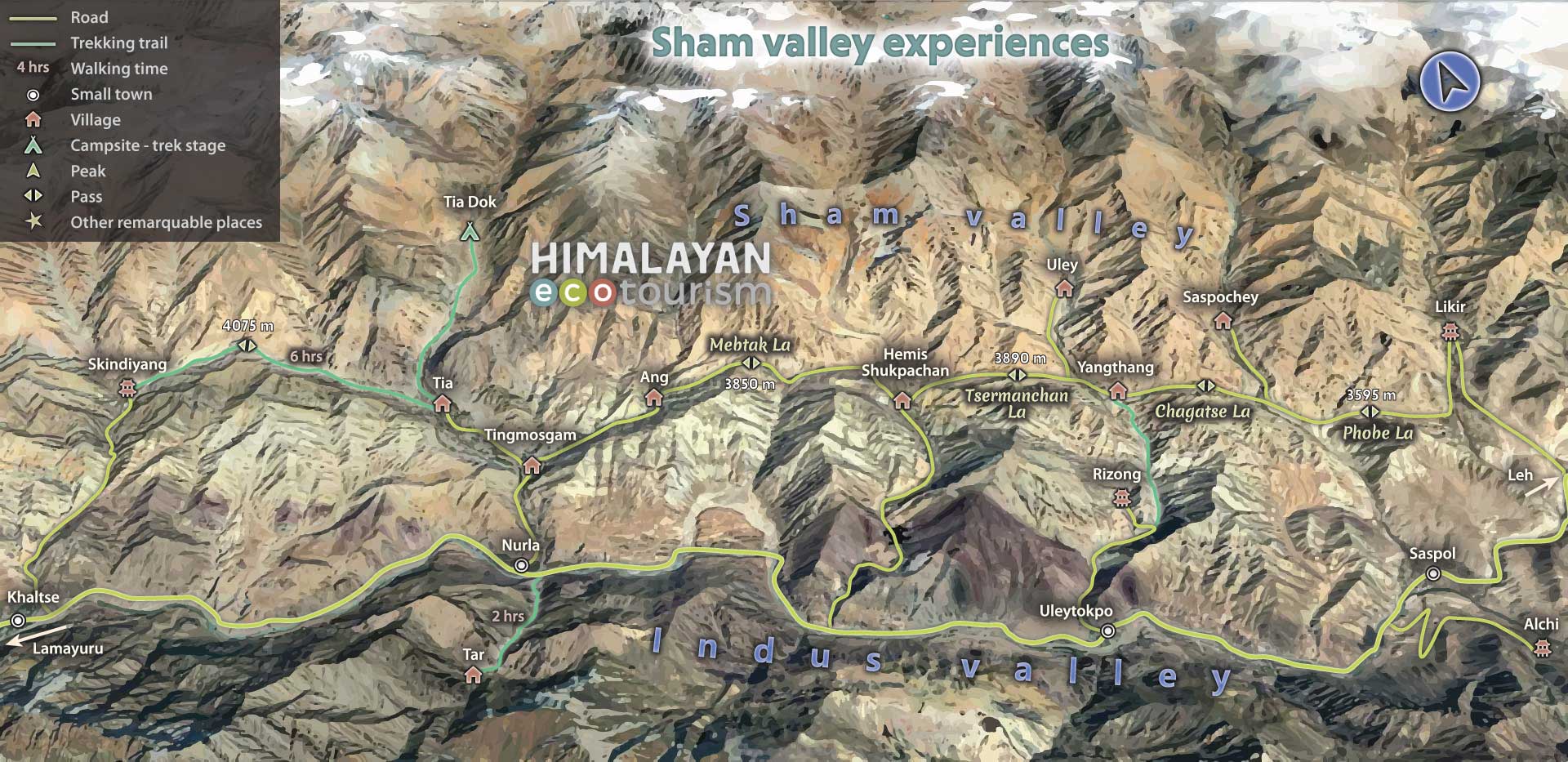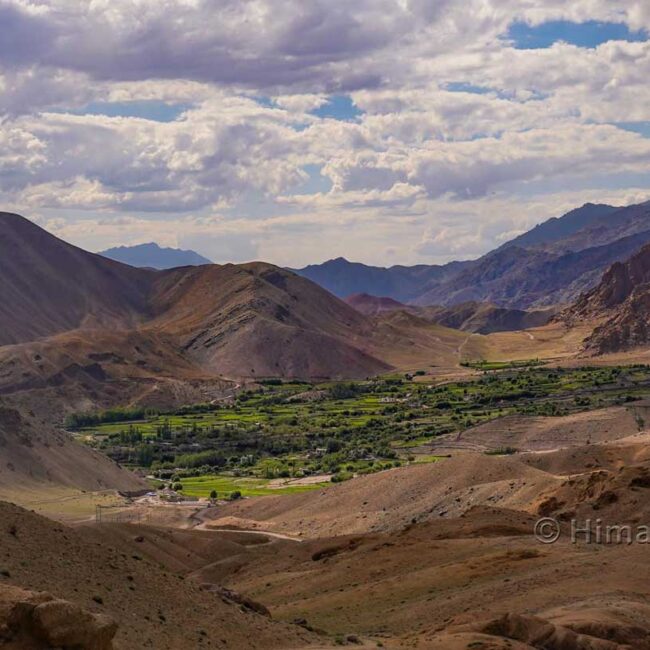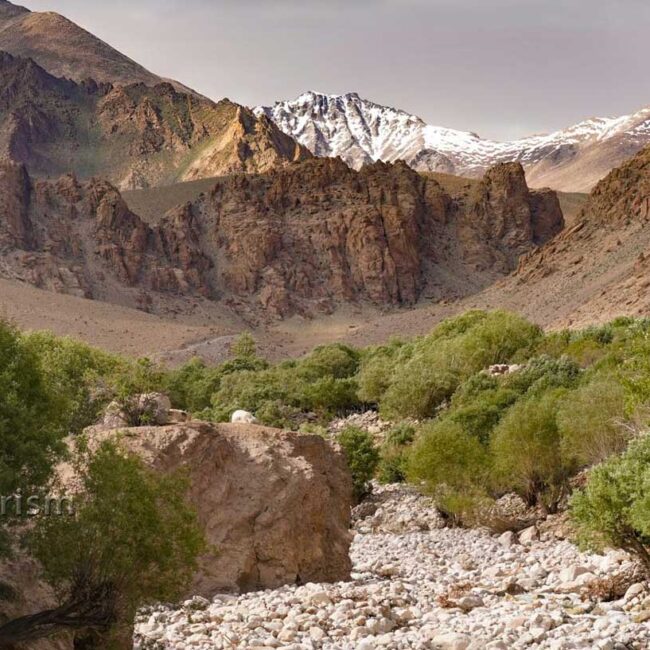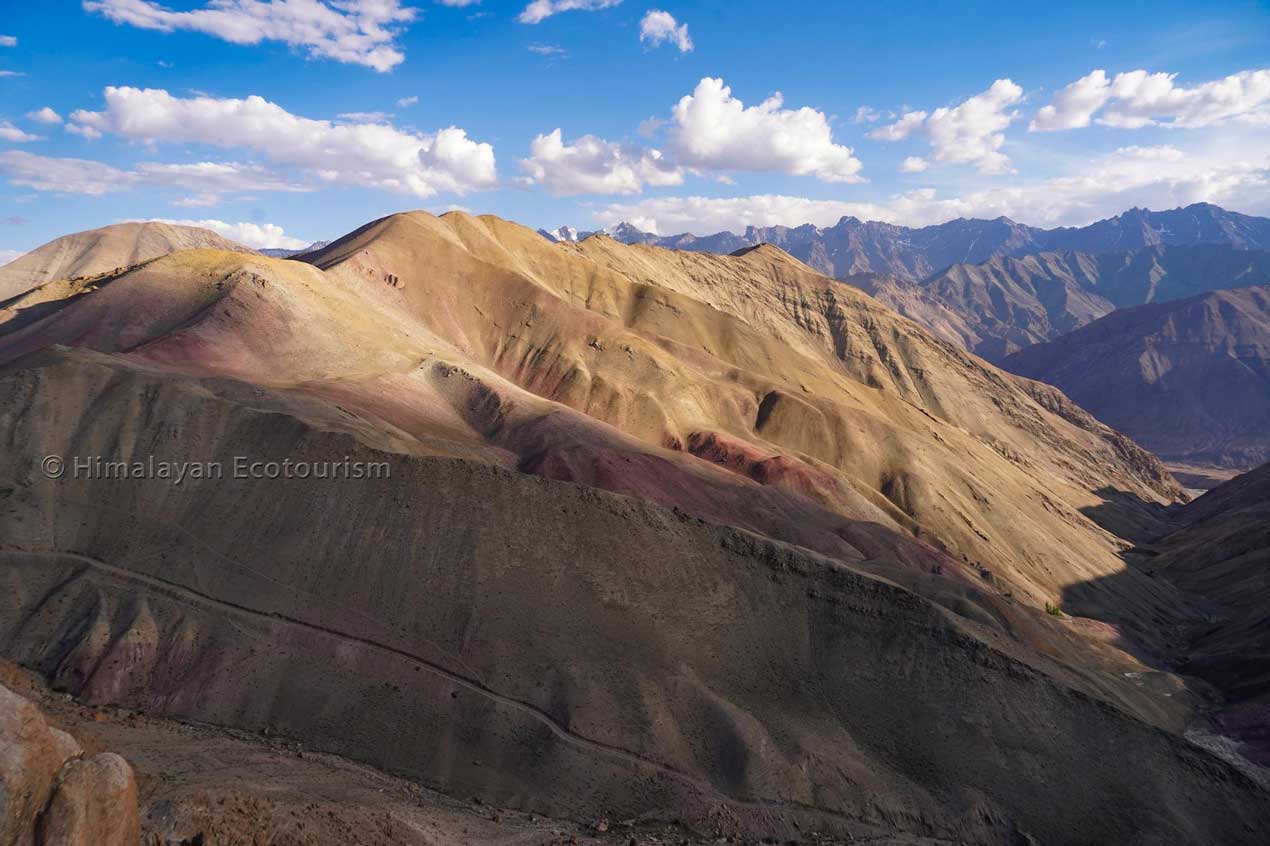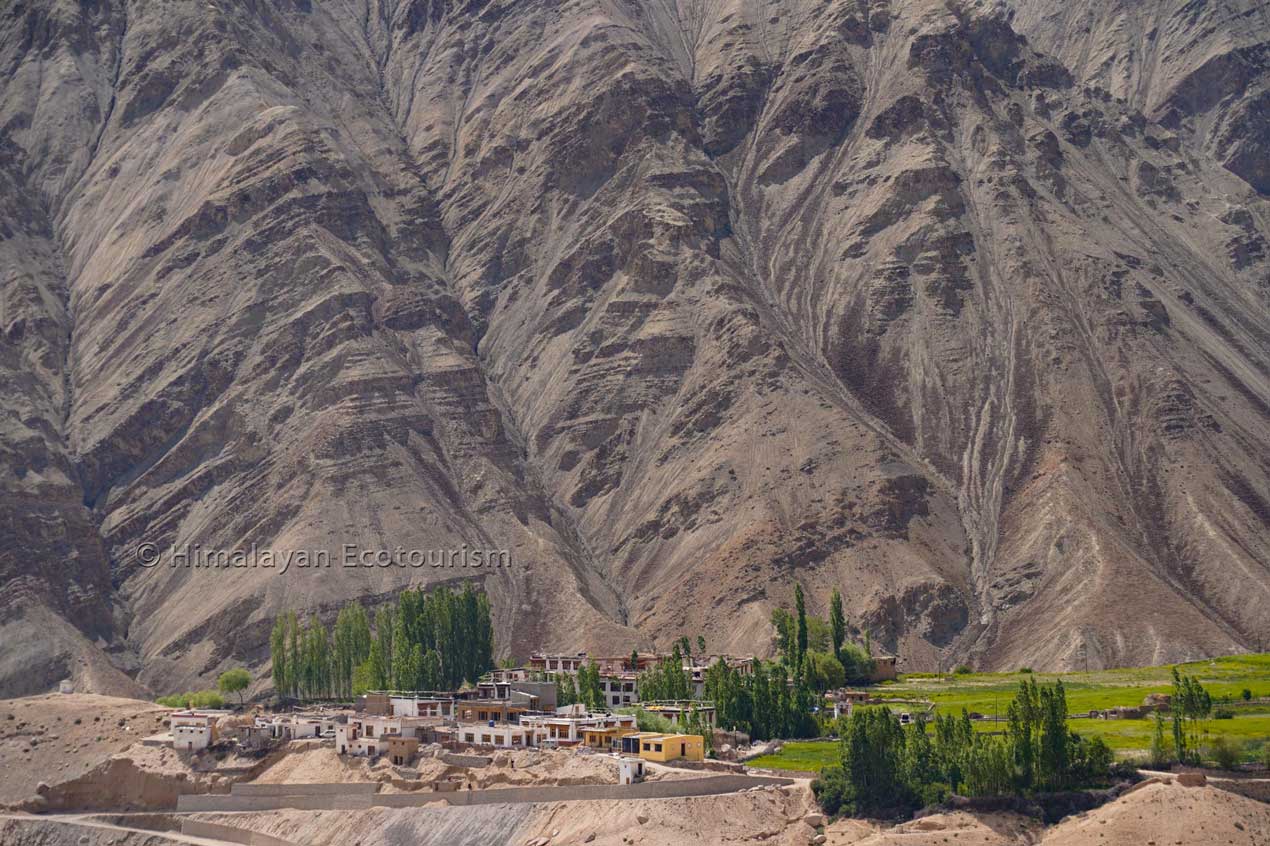The Sham valley trek (baby trek of Ladakh)
Sham Valley Trek – Introduction
Tourism in Ladakh has evolved significantly, especially after the pandemic. Once renowned as a destination for extraordinary treks, Ladakh offered travelers an immersive experience – where breathtaking Himalayan landscapes intertwined with Tibetan culture and Buddhist spirituality. Many visitors embarked on challenging, multi-day treks, encountering remote villages and untouched traditions along the way.
At the same time, Ladakh – often called the “Little Tibet of India” – attracted cultural travelers eager to explore its ancient monasteries, spiritual heritage, and traditional way of life, preserved from outside influences. But not all of these travelers were prepared for high-altitude, strenuous treks.
This is where Sham Valley found its place. Known as the “Baby Trek of Ladakh,” it offers a perfect blend of shorter, easy hikes through villages and monasteries, at a lower altitude (3,500–4,000 meters) compared to the more demanding treks of the region. The Sham Valley name is somewhat misleadingly called a ‘valley,’ as it is actually a region composed of multiple interconnected smaller valleys, linked by the passes you cross along this trek.
With improved road connectivity, much of the region is now accessible by car. While this has changed the trekking experience, it has not diminished Sham Valley’s charm. Several sections of the traditional trek remain untouched by roads, allowing for peaceful, scenic walks through Ladakh’s timeless landscapes. More importantly, the valley offers meaningful experiences beyond trekking – stays in traditional villages, spiritual encounters with monks and nuns, visits to ancient monasteries, and newly developed trekking routes curated by Himalayan Ecotourism.
Join us on the Sham Valley trek for an unforgettable journey into the heart of Ladakh, where culture, nature, and spirituality come together – off the beaten track.


Sham valley trek features
Duration of your trek
Day-min : The minimum number of days required for the trek (from Leh to Leh)
Day-max : The maximum number of days you can spend on this trek. Prolonged itinerary can be discussed with our team.
AWTD : Average walking time per day (<3 : easy, 3 to 5 : moderate, >5 : strenuous
Altitudes of your trek
Min : Minimum altitude of your trek.
Max : Maximum altitude of your trek.
Ascent : The total ascent throughout the trek.
Descent : The total descent throughout on the trek.
Difficulty of your trek
Stamina : The physical effort involved during your trek. Rated from 0 (easiest) to 100 (most strenuous). If you have an average fitness you can consider all the treks up to 50. See here for more details
Technical : Difficulty of your trek in terms of exposure to danger and required experience.
0 to 20 : No difficulties,
20 to 40 : Walking on good mountain trails,
40 to 60 : Some walking on difficult mountain trails (steep slopes, rocks, etc.),
60 to 80: You are exposed to some dangers (void, snow, falling rocks, etc.),
80 to 100 : Experience required (please inquire).
Overall : Average between Stamina and Technical rating.
Duration
Altitudes
Difficulty

Sham valley trek map
Sham valley trek itinerary in short
The Sham Valley Trek is an easy to moderate trek, perfect for beginners and those looking for a short yet immersive Himalayan experience. With elevations ranging between 3,200 m and 4,075 m, it features gradual ascents, well-defined trails, and a network of traditional homestays. The trek takes 3 to 5 days, covering remote villages, scenic passes like Mebtak La (3,850 m), and lush valley bottoms, contrasting with Ladakh’s arid landscapes. Accessible year-round, it is a great winter trek, offering chances to spot the Snow Leopard in Ulley.
Best time to trek in Sham Valley
Unlike many other treks in Ladakh, the Sham Valley trek is accessible year-round. The peak trekking season from June to September offers pleasant weather, but the summer months can sometimes be surprisingly warm during the day. For a more comfortable experience, consider trekking in April, May, or October when temperatures are milder, and the landscapes take on a unique charm.
Note that the month of April will allow you to enjoy the blossoming of the apricot trees in the villages. This is a particularly beautiful time to go on the Sham valley trek.
For those looking for a more adventurous experience, winter trekking in Sham Valley is a fantastic option. The snow-covered landscapes and crisp mountain air create a magical atmosphere, and winter is also the best time to spot the elusive Snow Leopard. If you’re interested in wildlife tracking, we recommend extending your trek to Ulley, a village accessible from Yangthang, renowned for its Snow Leopard sightings during the colder months. However, winter temperatures in Ladakh can be extreme, often dropping to -20°C or even -30°C, so proper preparation and gear are essential for a safe and enjoyable trek.
JAN
Good to go
FEB
Good to go
MAR
You may go
APR
Best time to go
MAY
Best time to go
JUN
Best time to go
JUL
Best time to go
AUG
Best time to go
SEP
Best time to go
OCT
Good to go
NOV
You may go
DEC
You may go
Other treks and experiences in Ladakh
Treks in Ladakh
Our selection of treks in Ladakh and Zanskar, one of the most stunning region on earth !
Ladakh village experience
For the real travellers who want to discover the local culture and its landscape
Ladakh Experience journey
Get an idea of what travelling with a social enterprise really means in Ladakh.
From our gallery
Photos of the Sham valley trek
Itinerary
Day 1 : Likir (3750 m) to Yangthang (3655 m)
| FEATURES | DESCRIPTION | ||||||
|---|---|---|---|---|---|---|---|
|
Your trek begins in the morning from your homestay in Likir. Depending on the location of your stay, you may find a footpath that avoids the road. As you ascend gradually, you reach the Phobe La pass (3595 m). From here, the valley opens up towards Saspochey, where the only significant habitation is a small settlement called Sumdo near the river. Taking a brief rest here, you can enjoy the rare sight of flowing water in this high-altitude desert before moving onward.
From Sumdo, you continue your climb to Chagatse La. A well-informed guide can lead you on a quieter, less-traveled path through a dry valley, away from the road. Descending from the pass, you approach Yangthang village, where you settle into your homestay, enjoying the serenity of the village and the hospitality of its people.
Alternative Route: Instead of starting from Likir, you can reach Yangthang via Rizong Monastery and Jelichun Nunnery. This option allows for a deeper spiritual experience, staying with monks or nuns before embarking on the trek |
Day 2 : Yangthang (3655 m) to Hemis Shukpachan (3700 m)
| FEATURES | DESCRIPTION | ||||||
|---|---|---|---|---|---|---|---|
|
Leaving Yangthang, you descend towards the river at the village's lower side, crossing fertile fields and poplar groves. This offers a wonderful opportunity to observe local life before ascending a ridge towards Tsermanchan La at 3890 m. From the pass, take a moment to look back at Yangthang, a lush green plateau amidst stark mountains with snow-capped peaks in the distance.
The descent reveals Hemis Shukpachan, a picturesque village known for its large Buddha statue at its center. Walking through the village, you can hear water flowing in small irrigation channels, attracting birds that bring life to this oasis. Spend the night in a homestay, enjoying the peaceful village atmosphere. |
Day 3 : Hemis Shukpachan (3700 m) to Tingmosgam (3260 m)
| FEATURES | DESCRIPTION | ||||||
|---|---|---|---|---|---|---|---|
|
This is one of the trek’s most beautiful segments. The climb to the first pass is gentle, following a footpath that avoids the road. As you gain elevation, you leave behind the village and enter a remote landscape where the mountains display hues of purple, green, and gold. After crossing a small valley, you reach Mebtak La (3850 m), a high point with breathtaking views.
Descending towards Ang, you pass through a surreal landscape of rock formations. Enjoy the view of the pink mountain on your left. The final stretch follows the valley floor to Tingmosgam, where you spend the night in a homestay, experiencing the charm of this small village. |
Day 4 : Tingmosgam (3260 m) to Tia village (3430 m)
| FEATURES | DESCRIPTION | ||||||
|---|---|---|---|---|---|---|---|
|
A shorter trek today allows you to immerse yourself in local culture. Walking through fertile valley floors, you witness how Ladakhis enhance the ecosystem, cultivating verdant fields in an otherwise arid environment.
For those wanting more activity, a side trip to Tserkamo Monastery is possible. This small monastery, located 2 km above Tingmosgam, provides an additional glimpse into Ladakh’s spiritual heritage. The day ends in a homestay in Tia village, where you can relax and enjoy traditional Ladakhi hospitality. |
Day 5 : Tia village (3430 m) to Skindiyang (3545 m)
| FEATURES | DESCRIPTION | ||||||
|---|---|---|---|---|---|---|---|
|
Today’s trek takes you further into Ladakh’s wilderness, away from roads and deeper into the realm of the elusive snow leopard. Following the river upstream, you ascend towards a high-altitude pass at 4075 m. From the top, the panoramic views are spectacular, but for those seeking an even better vantage point, a short climb of 75 m (difference of elevation) to a nearby summit (4150 m) offers a 360-degree view of the surrounding landscape.
The descent leads to Skindiyang, a small village with an ancient monastery. This remote setting, far from the bustling tourist routes, allows you to fully appreciate the raw beauty of Ladakh’s high-altitude desert. Spend the night in a local homestay, reflecting on your journey through the Sham Valley. |
Gallery
Photos of the Sham valley trek
Share your feedback
Thank you for sharing your experience! Your feedback is invaluable and inspires fellow travelers to choose responsible tourism when they journey with us.






